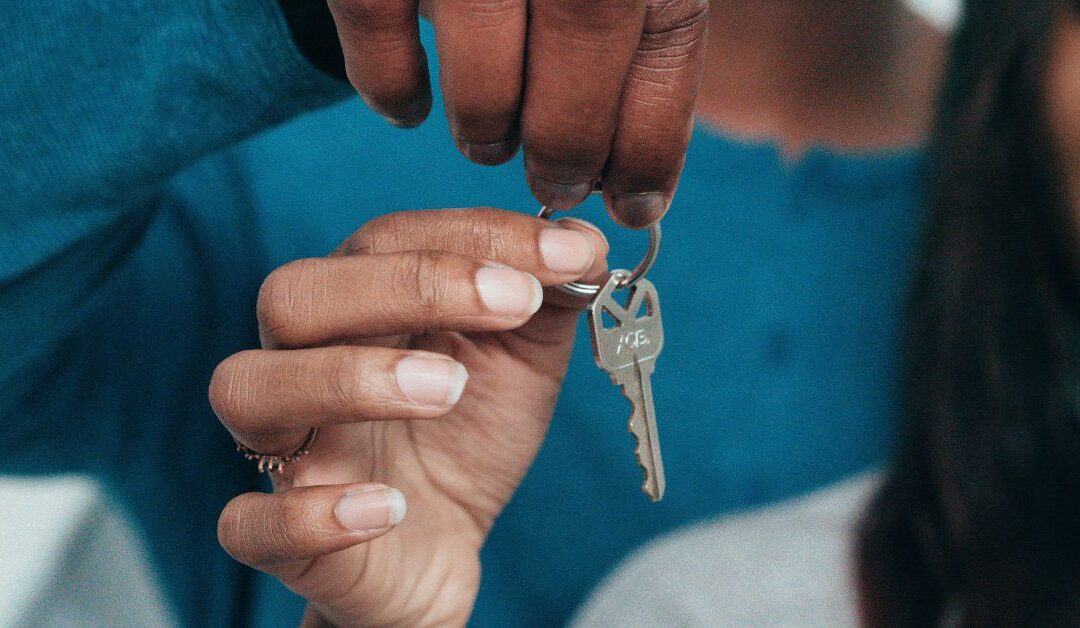Should you invest in student housing?
You’ve come to the right place.
I’ve built a multiple six-figure portfolio investing in student housing. And today, I share how you can do the same.
Want to learn more? Let’s get started!
What is student housing?
Student housing rentals are properties you can buy and then rent out to college students. Instead of renting dorm rooms on campus, students rent a private room from you and walk, drive, or take public transportation to attend class.
Depending on the size of the property, you can realistically have 4-6+ students renting your rooms and sharing common areas, like a kitchen, living room, bathroom, and so on.
For example, a six-bedroom, two bath house could house six students comfortably.
But can this type of rental arrangement actually work?
Absolutely.
Demand for student housing has continued to rise. Rents are up 8.8% since the same time last year and occupancy is at 93.7% for all universities. The student housing market size is expected to grow to 9.2 million beds by 2031.
And student housing investments reached $11 billion in 2019.
Ultimately, a student housing investment is a legitimate, long-term money-making strategy.
How do I know?
Because I personally used it to build a multiple six-figure rental portfolio. I was inspired by my grandfather, who built a real estate portfolio that allowed him to retire early – and pay off part of the college tuition costs that my brother and I racked up.
You can learn more about my story here:
I’ve also helped my clients get results for themselves. You can see their student housing investment returns here:

But what are the pros and cons of this type of investment? That’s what we’ll look at next.
Pros of investing in student housing
First, let’s start with the pros of student housing investments.
1. High demand
Clearly, students need a place to live while they study on campus. The problem? According to a recent survey by Student Beans, 20% of students struggle to find housing. In fact, even colleges that offer dorms often don’t have enough room for all their students.
Also, many foreign students come to American universities with limited options and no family in the area, which increases the demand for student housing.
2. Co-signers are obliged to pay rent if a student can’t
An easy way to eliminate the risk of having renters who don’t pay is to have a parent or guardian co-sign.
Plus, keep in mind that, unlike other types of renters, students have several unique options that can help them afford housing, including:
- Student loans
- Financial aid (which sometimes covers room and board)
- Stipends (for grad students)
3. Less need for expensive remodeling
College students usually aren’t as picky about their home environment as other, higher-income tenants might be, which makes investing in expensive remodeling less important. As a result, you save more money.
4. Recession-proof
More people look to re-skill or upskill when an economic crisis happens, which means a student housing investment is a good choice, even in a downturn.
For example, college enrollment grew by almost 16 percent between 2007 and 2010, no doubt in part because people were trying to stay professionally competitive during that economically challenging time.
5. Marketing is easy
With Facebook groups, Roomies.com, Uloop, Zillow, and Apartments.com, it’s relatively easy to get the word out about your student rentals.
Plus, students themselves talk about where they stay on student forums, so doing some research and buying property in “talked about” neighborhoods will make it easier for you to get consistent tenants.
Another tactic that helps is pricing your rooms below what the local college charges for their dorms, if they have any. So, for example, I charge about half of what college dorms cost, which makes my properties attractive for budget-conscious students.
6. Consistent income
Unlike other rental properties, having a student housing investment means you’ll have way fewer vacancies. Students have to stay near campus for their entire semester, and many even choose to stay during breaks for work, internships, and so on.
Plus, even if one student leaves, you’ll still have several other students paying rent, which gives you a consistent cash flow.
What I do is offer leases until the end of July, then 12-month leases beginning in August. My tenants are allowed to sublet to other students taking summer classes, and they typically don’t have any trouble finding subletters.
By renting by the room rather than the house, you can double or triple your rental income. So this system is highly profitable.
7. Price appreciation
College towns are an ideal place to invest in rentals. Why?
Because as long as there’s a college, there’ll be demand for housing from all the students coming to that area to study. This makes it a lot easier to sell the property later, if you want to.
For example, where I invest, there are major hospitals like Mayo Clinic and Johns Hopkins that attract medical students from all over the world. Again, investing where high-achieving students study helps keep your rental valuable long-term.
Okay, now that we’ve talked about the pros of having a student housing investment, let’s talk about some cons you also need to know about.

The cons of investing in student housing
Here are some cons to consider before investing in student housing.
1. Inexperienced tenants
When students move to college, it’s often their first time living away from their parents’ house. This means they won’t always know that grease shouldn’t be poured down the sink or when trash day is.
Yes, this is a downside to renting to students.
That’s why I have a set of house rules in my rental properties that explain things like how to change a lightbulb or what to do if they get locked out.
Ultimately, you can protect yourself with a contract, clear rules, and a checklist of who you accept as a tenant. It’s the best way to avoid issues down the road.
2. Summer vacancies
Many students choose to leave town over summer break. In other words, if you structure your lease incorrectly, it can lead to months with vacancy. And that’s a bummer.
The good news? To avoid this, you can choose to have students sign a year-long contract that will guarantee you rent for the duration of the contract.
In fact, that’s what I do: My tenants rent from August to August, but again, they have the option to sublet to summer students. So, if they leave temporarily and want to earn a little side income while their room is unoccupied, they’re allowed to do that.
It’s a win-win. I can count on having my rooms rented for a year at a time, and my tenants are free to go on vacation when they want.
3. Property damage
It’s no secret that students like to party and have fun. But as a property owner, paying the bills for potentially expensive repairs isn’t quite as fun.
Again, the best way to avoid issues is to protect yourself with a solid contract, insurance, co-signers, and a security deposit.
You also want to target high quality tenants who are focused on their studies.
For the security deposit, I personally collect 1-1.5x month’s rent, depending on where my property is located. These security deposits usually add up to $3,000 to $5,000 per property. With that, I have enough money to replace most things that break, so those expenses are factored in.
Now you know what the pros and cons of student housing investments are. Next, let’s talk about how to go about investing in your first student housing rental.

How to make your first investment
Once you’ve weighed the pros and cons and have decided that a student housing investment is what you want, it’s time to find the right option for you.
Before getting started, though, always contact the city you’re planning to buy in to make sure your planned rental property would be legal to run. Different cities have different rules and restrictions, so it’s always better to be on the safe side.
Invest in the right property
Some students don’t have cars. That’s why student housing options that are within a short walking distance of campus are particularly attractive. If the college is a commuter college, though, choosing a property that’s a 5-minute drive to campus is close enough.
But apart from location, what kinds of properties are best for student rental investments?
Opt for large, newer houses that are over 1,500 sq/ft, since you can often convert spare rooms into bedrooms for increased cash flow.
A good rule of thumb is to have three people per bathroom. Why? Because it helps make sure everyone has access to showers when they need them without having to wait in line. But at the same time, it allows you to charge competitive rates.
Also, old houses might be cheaper to buy upfront, but they often have old pipes, lead paint, and other issues that can end up costing a lot to update. I know this first hand because I bought a one hundred-year-old house that ended up needing $30k in unexpected repairs!
So, make sure you know what you’re getting yourself into before investing in a property.
You should know your numbers like the amount of rent you can realistically expect to collect, maintenance costs, cash on cash return (which is the amount you earn relative to your cash invested), and the cap rate (which is a property’s yield relative to the price of the house).
To avoid expensive repairs, I do plenty of inspections and test everything in the house. This is important because small things can snowball into larger problems if they’re not addressed quickly (like frozen pipes).
Attract the right tenants
I use a method I call the PRIME method to find my ideal tenants. Here’s what that means:
P stands for placement of the ad. Basically, I want to make sure I advertise where my ideal tenants will find me. Again, to do this, I personally use Facebook groups, Roomies.com, Uloop, Zillow, and Apartments.com.
R stands for reviewing social media. So, I make sure to check prospective tenants’ social media accounts to see if they party, drink, do drugs, and so on. This gives me a better idea of what I can expect from them as tenants.
I stands for identifying the type of tenant, which means determining if they get angry easily, have an entitled attitude, or similar. People who are difficult to get along with don’t make good tenants, so this is an important step in filtering candidates.
M stands for measuring responsiveness. Responsible prospective tenants are quick to respond to messages, provide required documents when asked, and always maintain professional communication. The more responsive and polite they are, the more likely it is that they’ll make good tenants, so don’t miss this step.
Finally, E stands for ensuring proof of income. So, when I evaluate a prospective tenant, I take a look at their parents’ bank statements or FICO score. Alternatively, I check their financial aid or student loan documents to get a better idea of their ability to pay rent on time.
Best student housing markets
So, now you might be wondering: What are some of the best places to invest in student housing?
Great question.
If you’re looking to invest in cities, you can’t go wrong by choosing a city where there are top hospitals, lots of new job opportunities, and/or top colleges.
This is because areas that have excellent hospitals and other medical facilities, job growth, and Ivy League colleges attract high income earners, like surgeons, pharmacists, and dentists. This translates to a better quality of life in the area and higher prices across the board, since the demand for services in an area is higher when more people move there.
And, unsurprisingly, when more people move to an area, housing costs also increase – which is great news for you if you decide to take the leap and invest in student housing.
For instance, Mayo Clinic is headquartered in Rochester, Minnesota, whereas Yale University is located in New Haven, Connecticut, along with hospitals and a strong job market. Those are just a few examples of cities with great potential, but what it comes down to is that you research your options.
I explain more about what makes a good deal in this short video:
Over to you!
Now you know the benefits and downsides of a student housing investment. As you can see, it’s a great option if you’re interested in having a steady, long-term income with minimal risk and a potentially significant ROI.
Though it’s not for everyone, renting to students could make a lot of sense for you if you’ve weighed the pros and cons carefully and are ready for the challenge.
What’s the biggest reason you want to invest in student housing? Let me know in the comments.
And if you want my help with finding your first property, take a look at my coaching services.


